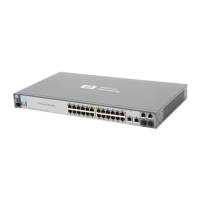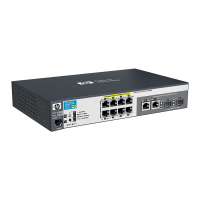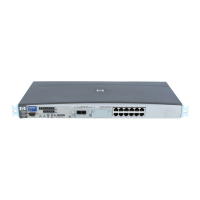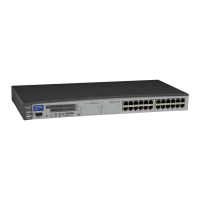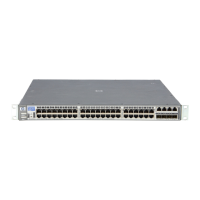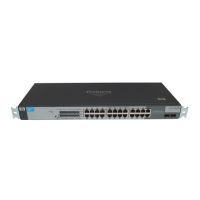If you had already typed in trap- on line (1) and then pressed the tab character, the system
would complete the keyword trap-send-authentication, for it is the only possible
completion for trap-, and display the completed command line as shown below:
1. HP 4108GL(config) trap-
2. HP 4108GL(config) trap-send-authentication
1.6 Command Line Editing
Before you press return, the current command line can be edited using special keys
including arrows and control characters. The following table describes the supported
command editing keys and their function:
Keystroke Function
Ctrl-A Jumps to the first character of the command line.
Ctrl-B; left arrow Moves the cursor back one character.
Ctrl-C Escapes and terminates prompts and lengthy tasks.
Ctrl-D Deletes the character at the cursor.
Ctrl-E Jumps to the end of the current command line.
Ctrl-F; right arrow Moves the cursor forward one character.
Ctrl-K Deletes from the cursor to the end of the command line.
Ctrl-L; Ctrl-R Repeats current command line on a new line.
Ctrl-N; down arrow Enters next command line in the history buffer.
Ctrl-P; up arrow Enters previous command line in the history buffer.
Ctrl-U; Ctrl-X Deletes from the cursor to the beginning of the command line.
Ctrl-W Deletes last word typed.
Esc B Moves the cursor backward one word.
Esc D Deletes from the cursor to the end of the word.
Esc F Moves the cursor forward one word.
Delete; Backspace
Erases mistake when entering a command; reenter command after using this
key.
4

